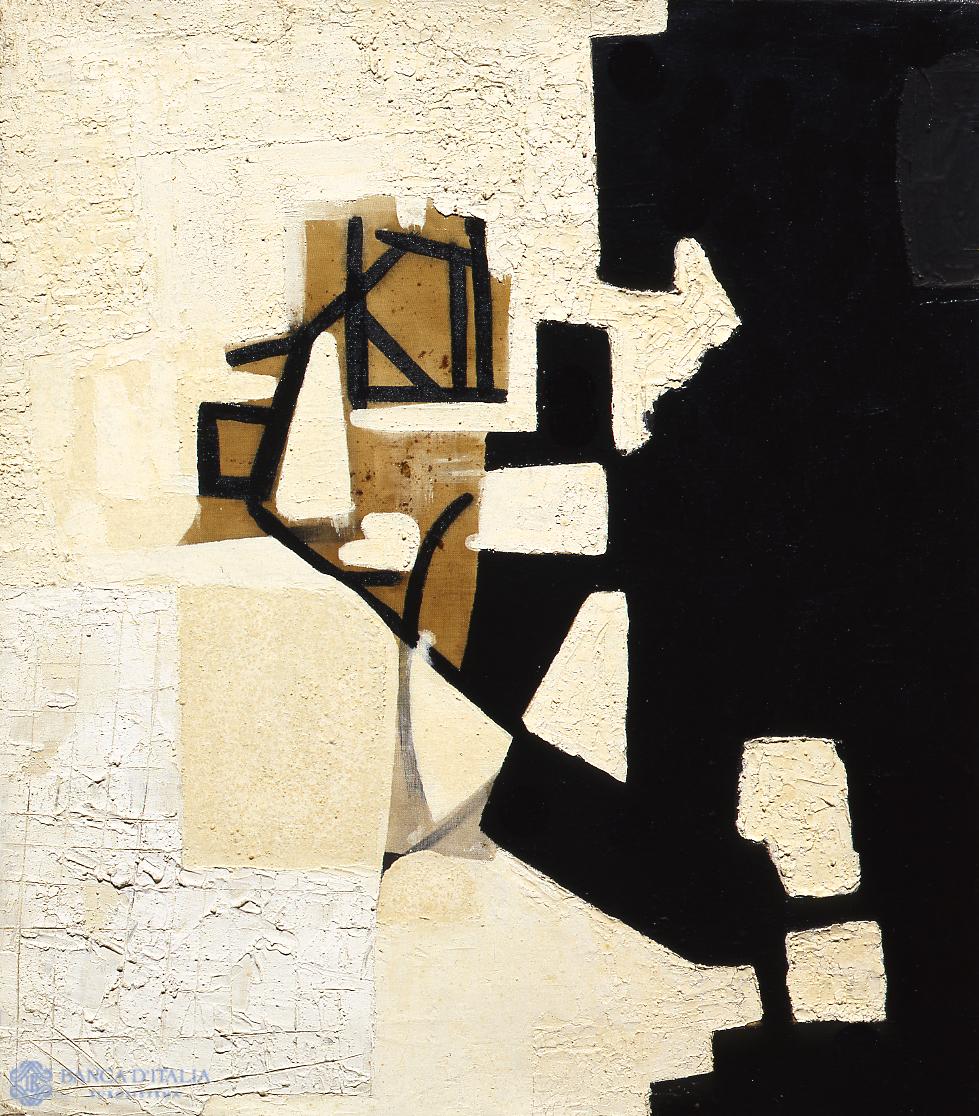Alberto Burri was born in Città di Castello in 1915. He graduated in medicine. A medical officer during the war in Africa, he was captured and transferred to prison camp in Hereford, Texas, where he began to paint. Following his release he moved to Rome, and in 1947 held his first one-man show of paintings and drawings that at the time were still figurative and characterized by a fiery expressionism. It is thought that by 1948 he was in Paris, where he absorbed the geometrical and neo-concrete lesson that would stay with him for years to come. He had already begun to construct his paintings using unorthodox materials when in 1949 he realized his first painting on the canvas of a cast-off sack. In the 1950s he produced his series of Muffe, Gobbi and the first series of Sacchi. He took part in several exhibitions in Rome and, with the Concretists, in Paris. Later, with Prampolini’s Art Club, his work was shown in various Northern European capitals. Three large-format “sacks” in 1952 marked the beginning of his fully mature season; that same year he exhibited at the Venice Biennale for the first time, where Fontana bought his Studio per uno strappo. In 1953, he held a major one-man show at the Fondazione Origine, introduced by Emilio Villa, who would later say that this was his ”first truly organic, explicit, authoritative, splendid and complete show”.
By that time Burri had become a national and international cause celebre, sparking scandal in Italy and even parliamentary questions by the conformist thinkers of the day. In New York, meanwhile, he exhibited in an important and soon-to-be historic collection at the Guggenheim Museum in 1953. Shortly afterwards he held a one-man show at the Stable Gallery, one of the hubs of the most modern international currents, where amongst others Robert Rauschenberg had the chance to see his work after a meeting in Rome. Other major “sacks” successively punctuated the 1950s; followed by the Combustioni on wood and plastic, which briefly brought the artist close to the more intense and emotional climate of Informalism. A style from which he distanced himself with the Ferri he produced in the late 1950s, once again governed by the neo-concrete order. In the meantime, all the major Italian critics and numerous foreign historians and critics (Sweeney, Tapié, Read, Krimmel and others) had acknowledged him as the foremost Italian painter of his generation, and there was a string of exhibitions, soon including anthological retrospectives, of his work in Europe and America. From the 1970s onwards, until his death, Burri organized his output into major cycles of formally coherent works, including the Cretti and the Cellotex. A large proportion of these were bequeathed to his native city, which today hosts the Foundation and Museum named after him.
He died in Nice in 1995.
Alberto Burri
Alberto Burri (Città di Castello 1915 - Nice 1995)
20th century AD



